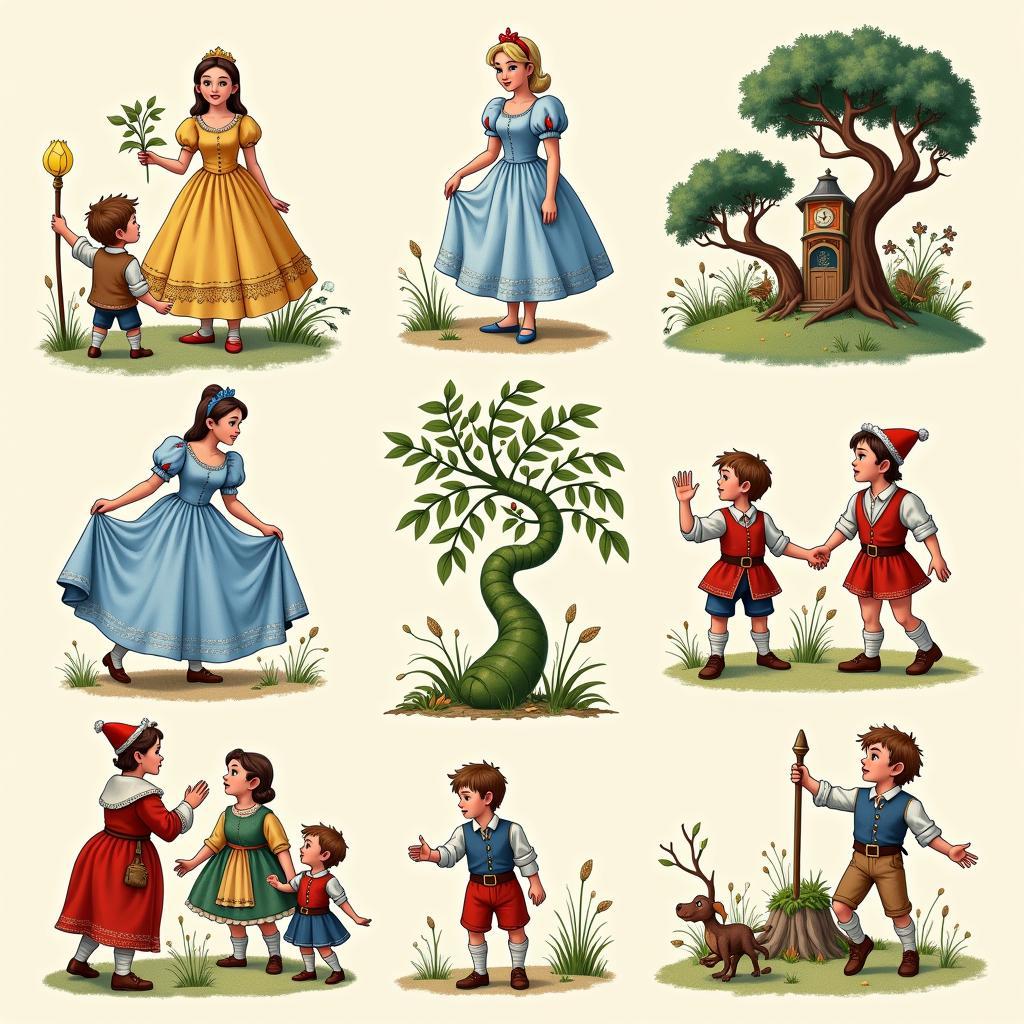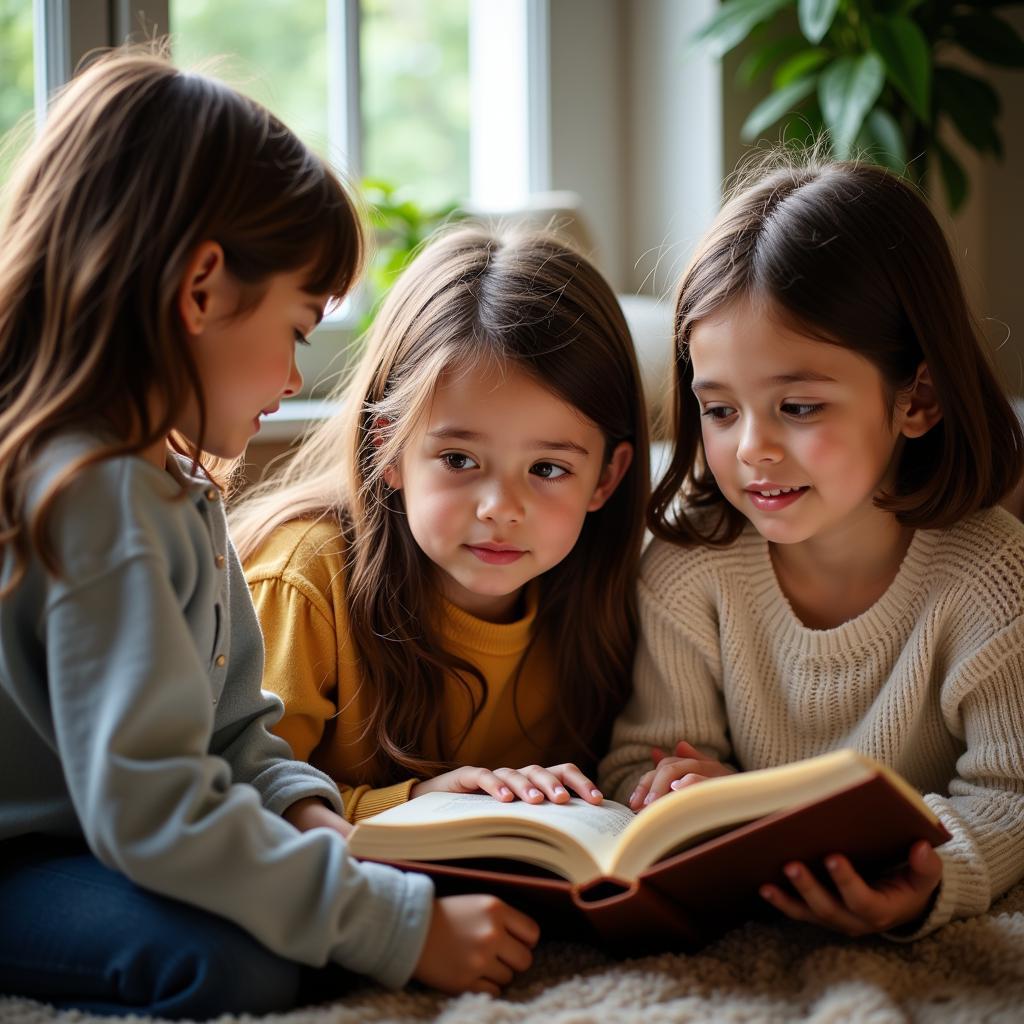Fairy tales in English have captivated hearts and ignited imaginations for generations. From classic tales like “Cinderella” and “Snow White” to modern adaptations and retellings, these enchanting stories continue to transport us to worlds of wonder and possibility.
 Classic Fairy Tales in English
Classic Fairy Tales in English
The Enduring Appeal of Fairy Tales
Fairy tales offer a unique blend of entertainment and moral instruction. These stories often feature relatable themes of good versus evil, love and loss, courage and perseverance. By immersing ourselves in these narratives, we learn valuable life lessons about kindness, resilience, and the importance of following our dreams.
One reason why fairy tales in English have resonated across cultures is their universal themes. Whether it’s the triumph of the underdog in “Jack and the Beanstalk” or the transformative power of love in “Beauty and the Beast,” these stories speak to fundamental human experiences that transcend time and place.
Learning English through Fairy Tales
Fairy tales can be a valuable tool for English language learners. The simple language, repetitive sentence structures, and engaging storylines make them accessible to learners of all levels.
 Learning English with Fairy Tales
Learning English with Fairy Tales
Here are some ways to incorporate fairy tales into your English learning journey:
- Start with adapted versions: Look for simplified versions of classic fairy tales designed for English learners. These adaptations often feature shorter sentences, controlled vocabulary, and helpful illustrations.
- Listen to audiobooks: Immerse yourself in the rhythm and intonation of English by listening to audiobooks of fairy tales. Pay attention to pronunciation and try to imitate the narrator’s voice.
- Read aloud with a partner: Take turns reading sections of a fairy tale aloud with a language partner. This will help you practice your speaking skills and receive feedback on your pronunciation.
Beyond the Printed Page: Fairy Tales in Popular Culture
The influence of fairy tales extends far beyond the realm of literature. These enchanting stories have inspired countless adaptations in film, television, theater, and music. From Disney’s animated classics to Broadway productions like “Wicked” and “Into the Woods,” fairy tales continue to captivate audiences of all ages.
These modern adaptations often put a unique spin on traditional tales, exploring complex themes and challenging conventional interpretations. By reimagining familiar stories, contemporary artists and storytellers introduce fairy tales to new generations while offering fresh perspectives on timeless themes.
Conclusion
Fairy tales in English continue to weave their magic, transporting us to enchanting worlds and reminding us of the power of imagination. Whether we revisit beloved classics or discover new interpretations, these timeless stories offer valuable lessons, spark our creativity, and remind us of the enduring power of storytelling.
If you’re looking for ways to improve your English or simply want to escape into a world of wonder, explore the enchanting world of fairy tales. You might be surprised by the magic you discover.
FAQs
1. What are some popular English fairy tales for beginners?
Some popular English fairy tales for beginners include “The Gingerbread Man,” “Goldilocks and the Three Bears,” and “The Three Little Pigs.” These stories feature simple language, repetitive phrases, and engaging storylines that are easy to follow.
2. Are there any resources for finding free English fairy tales online?
Yes, there are many websites and online libraries that offer free English fairy tales. You can also find audiobooks and animated versions on platforms like YouTube and Librivox.
3. How can I use fairy tales to improve my vocabulary?
Fairy tales often feature rich vocabulary and descriptive language. As you read, make note of any unfamiliar words and look up their definitions. You can also create flashcards to help you memorize new vocabulary.
4. Can you recommend some modern fairy tale adaptations for adults?
For modern fairy tale adaptations geared towards adults, check out the works of authors like Neil Gaiman (“Stardust”), Margaret Atwood (“The Handmaid’s Tale”), and Robin McKinley (“Deerskin”). These authors offer thought-provoking and often darker takes on traditional fairy tales.
5. Are there any cultural differences to be aware of when reading English fairy tales?
Yes, it’s important to remember that fairy tales often reflect the cultural values and beliefs of the time and place in which they were written. Some English fairy tales may contain elements that are unfamiliar or even considered outdated by modern standards. It’s always a good idea to approach these stories with a critical and open mind.
For any assistance, feel free to reach us at Phone Number: 02438573204, Email: [email protected] or visit our address: 169 P. Tây Sơn, Quang Trung, Đống Đa, Hà Nội, Việt Nam. Our customer support team is available 24/7.